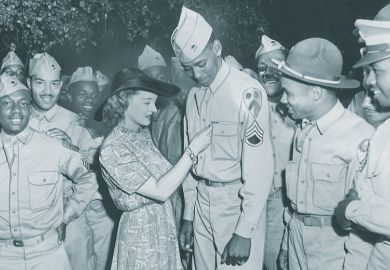Indian Popular Cinema gives students of film and media studies courses a useful general introduction to the diverse themes, styles and techniques of Indian cinema, and to its prolific regional production. The authors are generous in sharing information on further readings, and quote from a wide range of sources on Indian film. But it is doubtful that this book will generate much interest in a wider readership, and it will disappoint those who are interested in the passion and craft that informs the work of individual Indian film-makers.
The strange subtitle, "A Narrative of Cultural Change", shares the ambitions of other publications that aim to introduce a vast subject in condensed form; and so the book attempts to present the whole story of Indian cinema and talks of a 100-year history of both commercial and art films. No wonder then that it skims over important ideas and developments, reducing essential areas of debate to a brief bullet-point style of presentation. The authors provide synopses of the story-lines of key films, but fail to tell us much about the films' texture or how the role of photography, dialogue, performance or music helps achieve the film's purpose. Such an approach is widespread in the literature on Indian popular film - and perhaps inevitably so, as many writers come to it from disciplines such as anthropology, sociology, or literature, and are rarely specialists in cinema per se.
Inaccuracies in character names (the mother figure in Awaara is called Bharati in this book whereas her screen name is Leela), hint at the possibility that the authors may have relied on existing secondary sources on films rather than re-viewing the films themselves as part of the book's research. This may also explain why references to landmark films feel second-hand and provide little fresh insight.
The objective of the book as stated by the authors is "to provide the reader with a general introduction to this little-known but fascinating and highly influential Indian popular cinema which constitutes the main element of entertainment for at least a sixth of the world's population". If a national cinema already has an audience representing a sixth of the entire human race, can one still speak of it as little known? In the new millennium, it would seem to be time to look at Indian cinema on its own terms without apology or justification.
There is a real need for fresh, well-researched and insightful introductions to this subject which might give an outline of the wood while also showing the individuality of its varied trees. Indian Popular Cinema, for all its good intentions, shows that such an introduction has yet to be written. In the meantime, thankfully, Indian film producers do not depend on pleasing the few, but devote their limitless energy to enhancing their own special kind of entertainment.
Nasreen Munni Kabir, producer and director, is the author of Guru Dutt: A Life in Cinema.
Indian Popular Cinema: A Narrative of Cultural Change
Author - K. Moti Gokulsing and Wimal Dissanayake
ISBN - 1 85856 114 0 and 85856 096 9
Publisher - Trentham Books
Price - £42.50 and £13.95
Pages - 151
Register to continue
Why register?
- Registration is free and only takes a moment
- Once registered, you can read 3 articles a month
- Sign up for our newsletter
Subscribe
Or subscribe for unlimited access to:
- Unlimited access to news, views, insights & reviews
- Digital editions
- Digital access to THE’s university and college rankings analysis
Already registered or a current subscriber? Login



